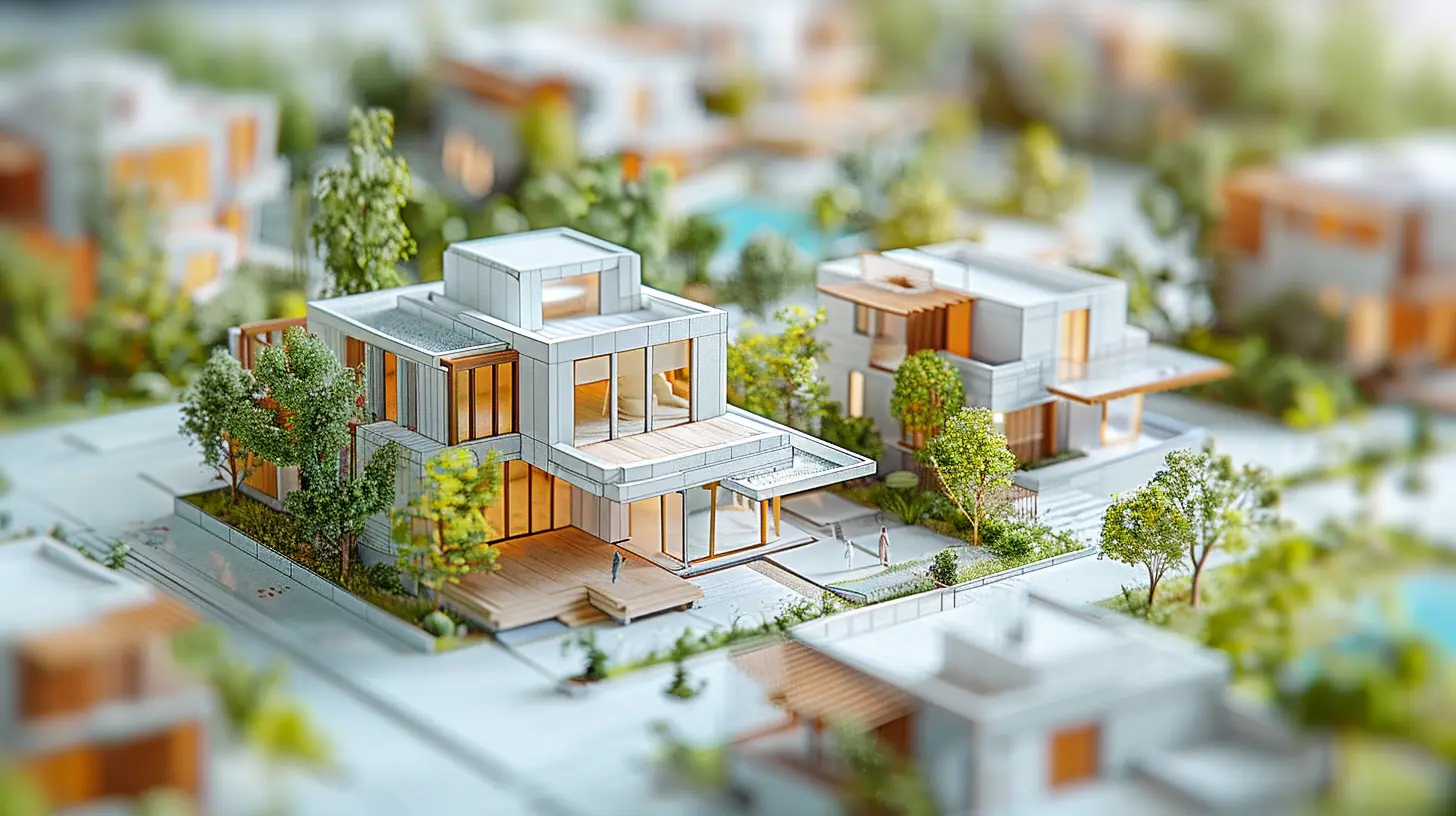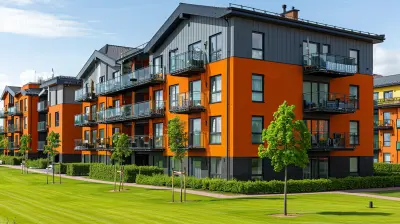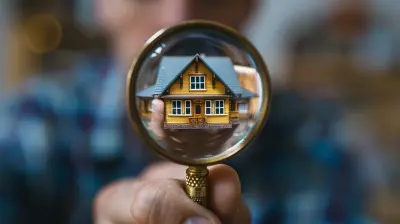Innovations in Zoning: From Traditional Systems to Form-Based Codes
18 February 2025
When it comes to shaping the look and feel of our cities and towns, zoning is like the invisible hand behind the curtain. It might seem like a boring, bureaucratic term, but trust me, it’s a big deal. Zoning decides how and where we live, work, shop, and even play. But here’s the thing—traditional zoning systems? They’re kind of outdated. That’s where the new cool kid on the block comes in: form-based codes. Don’t worry, I’ll explain what that means in a bit. So, let’s dive in and explore how innovations in zoning are shaking things up, and why it matters for real estate, urban development, and, ultimately, for us as individuals. 
The Basics: Understanding Zoning
Let’s start with the basics. Zoning is essentially a set of rules that tell you what you can and can’t do with a piece of land. It’s like when your parents tell you not to eat dessert before dinner—there’s a reason behind it (even if you don’t like it). Cities use zoning to organize land into categories, such as residential, commercial, or industrial. This helps keep the peace because, let’s face it, you probably wouldn’t want a noisy factory right next to your bedroom.But here’s the kicker: traditional zoning systems, called Euclidean zoning (not because of triangles but after a town called Euclid, Ohio), are super rigid. They separate land uses into zones, prioritizing separation over integration. It worked back in the day—think post-World War II suburbs. But today? Not so much. Now, people want vibrant, walkable neighborhoods where they can live, work, and play all in one place. The traditional way of zoning? It’s not cutting it anymore. 
The Problem with Traditional Zoning
So, what’s wrong with the “old-school” Euclidean zoning system? Well, for starters, it can feel like a strict dress code—restrictive and out of touch with modern preferences.1. Encourages Urban Sprawl
By separating land uses into rigid zones, traditional zoning forces people to rely on cars. You’ve got residential zones here, commercial zones way over there, and industrial zones in some far-off spot. The result? Sprawl. And with sprawl comes traffic, pollution, and a loss of community feel.
2. Kills Creativity
Traditional zoning doesn’t leave much room for innovation. Want to build a cool mixed-use development with apartments on top and shops below? You might run into a brick wall of zoning restrictions.
3. Ignores Modern Needs
People today crave walkable, diverse neighborhoods with character. But your typical cookie-cutter zoning map doesn’t exactly scream “vibrancy.” Instead, we get monotone developments that lack soul. 
Enter Form-Based Codes: The New Zoning Hero
This is where form-based codes (FBCs) come to the rescue. Think of form-based codes as the laid-back, forward-thinking cousin of traditional zoning. Instead of obsessing over how land is used, form-based codes focus on how buildings look, feel, and interact with the street and each other.In simpler terms? They focus on form over function.
How Form-Based Codes Work
Instead of dividing land into zones for specific uses, form-based codes emphasize design and functionality. For example, they might outline specifics like:- Building heights
- How close a building sits to the sidewalk
- Window placements
- Public space requirements
The idea is to create places that feel cohesive, walkable, and visually appealing—places people actually want to go to, rather than just drive past. 
Why Form-Based Codes Are a Game Changer
Alright, so why are form-based codes such a big deal? Let me break it down.1. Fostering Vibrant Communities
Form-based codes focus on creating neighborhoods that come alive. Picture a charming main street with cafés, boutiques, and apartment buildings all in harmony. That’s the dream, and form-based codes make it possible.2. Encouraging Mixed-Use Development
Forget the old “this is residential, this is commercial” mentality. Form-based codes embrace mixed-use spaces where you can find homes, shops, offices, and public spaces all within walking distance. Imagine grabbing a coffee downstairs before heading up to your apartment—talk about convenient!3. Flexibility
Unlike traditional zoning, form-based codes are built to adapt to changing needs. They don’t lock neighborhoods into one rigid purpose, meaning they’re better equipped to evolve with trends and market demands.4. Better Aesthetics
Let’s face it—nobody likes ugly, cookie-cutter buildings. Form-based codes prioritize design, ensuring each building contributes to a neighborhood’s visual appeal. Think of it as curating an Instagram-worthy streetscape.Real-World Examples: Form-Based Codes in Action
Still not convinced? Let’s take a look at a few cities that are already reaping the rewards of form-based codes.1. Miami, Florida
Miami adopted the Miami 21 Code, a citywide form-based zoning code, back in 2010. The goal? To foster walkable, mixed-use neighborhoods. Fast forward to today, and Miami’s urban areas are a lot more pedestrian-friendly and community-oriented.2. Arlington, Virginia
Arlington’s Columbia Pike corridor switched to form-based codes to transform its outdated strip malls into vibrant, mixed-use developments. The result? A bustling, lively community where people can live, work, and play—all without needing a car.3. Denver, Colorado
Denver revamped its zoning code in 2010 to prioritize walkable, transit-friendly neighborhoods. Form-based codes played a big role in shaping the city’s urban transformation.The Challenges of Implementing Form-Based Codes
Of course, it’s not all sunshine and rainbows. Implementing form-based codes does come with its challenges.1. Learning Curve
Switching from traditional zoning to form-based codes can be like convincing a hard-core flip-phone user to switch to a smartphone—it takes time and patience. Communities need education and buy-in.2. Cost and Resources
Developing a new form-based code system requires significant investment in terms of both time and money. Not every city is ready to shell out the necessary resources.3. Resistance to Change
Let’s face it—people don’t always like change. Some communities might push back, especially if they’re attached to the old way of doing things.The Future of Zoning: Where Are We Headed?
So, what does the future look like? Experts predict that form-based codes—and other creative zoning innovations—will become more common as cities and towns work to meet 21st-century needs. The push for more walkable, sustainable, and vibrant communities isn’t going away anytime soon.But it’s not just about form-based codes. Technology and data are also starting to play a role in shaping zoning practices. For example, cities are using GIS (Geographic Information Systems) to make smarter zoning decisions based on real-time data. Think of it as zoning meeting the digital age.
Why This Matters to You
If you’re in real estate, urban planning, or just someone who cares about where they live, zoning matters. It might not sound glamorous, but it has a direct impact on property values, livability, and even your day-to-day routine. Form-based codes offer a glimpse of what’s possible when we think outside the box—and honestly, the potential is pretty exciting.So next time you stroll through a charming, vibrant neighborhood, take a moment to appreciate the zoning magic at play. Who knows? It might just make you look at city planning in a whole new light.
all images in this post were generated using AI tools
Category:
Zoning RegulationsAuthor:

Travis Lozano
Discussion
rate this article
17 comments
Ava Bishop
This article insightfully highlights the shift towards form-based codes, emphasizing their potential to foster community engagement and sustainable development, ultimately reshaping our urban landscapes for the better.
April 6, 2025 at 11:13 AM

Travis Lozano
Thank you for your thoughtful comment! I'm glad you found the discussion on form-based codes and their impact on community engagement and sustainable development insightful.
John Dillon
Great insights! It's fascinating to see how zoning innovations shape our communities for the better.
March 28, 2025 at 5:15 AM

Travis Lozano
Thank you! I'm glad you found the insights valuable. Zoning innovations truly play a crucial role in enhancing community development.
Olivia McFadden
Exciting shift towards flexible zoning solutions!
March 25, 2025 at 12:55 PM

Travis Lozano
Thank you! I'm glad you found the shift towards flexible zoning solutions exciting—it's a crucial step in adapting to modern community needs!
Valeria Jackson
Exciting insights on Zoning's evolution and future possibilities!
March 20, 2025 at 9:54 PM

Travis Lozano
Thank you! I'm glad you found the insights exciting and relevant to the ongoing evolution of zoning.
Dorothy Soto
In the tapestry of urban dreams, Zoning evolves, untangling seams. Form-Based Codes, a dance of design, Breathe life into spaces, where visions align. Embrace this shift, where harmony's found, In every heartbeat of the city, profound.
March 16, 2025 at 1:59 PM

Travis Lozano
Thank you for beautifully capturing the essence of urban evolution! Your poetic take highlights the transformative power of form-based codes in creating harmonious city spaces.
Yolanda Foster
Embrace form-based codes: they revolutionize zoning, fostering vibrant communities and sustainable development!
March 14, 2025 at 3:56 AM

Travis Lozano
Thank you for your comment! I agree that form-based codes can significantly enhance community vibrancy and promote sustainable development. They offer a transformative approach to zoning that prioritizes character and functionality.
Parker Pruitt
Form-based codes: where creativity meets structure, transforming zoning from rigid rules to vibrant possibilities.
March 10, 2025 at 9:54 PM

Travis Lozano
Thank you! Form-based codes truly empower creativity while maintaining essential structure, paving the way for dynamic and adaptable urban environments.
Ivan McLaurin
Oh, fantastic! Because nothing screams excitement quite like zoning innovations. I can hardly contain my enthusiasm for form-based codes—truly the stuff of dream vacations and wild parties. Who needs roller coasters when you've got zoning regulations, right?
March 8, 2025 at 8:38 PM

Travis Lozano
I appreciate your sarcasm! Zoning might not be the most thrilling topic, but these innovations can really shape our communities in positive ways.
Raegan Butler
Form-based codes breathe new life into zoning, transforming rigid frameworks into vibrant, adaptable communities. Innovation meets livability—what's not to love?
March 7, 2025 at 5:36 AM

Travis Lozano
Thank you! I'm glad you resonate with the transformative potential of form-based codes. They indeed offer a fresh approach to fostering dynamic and livable communities.
Monique Duke
Exploring form-based codes offers exciting potential for urban development.
March 4, 2025 at 1:14 PM

Travis Lozano
Thank you! Form-based codes indeed provide a dynamic approach to urban development, promoting walkability and vibrant community spaces.
Nyx McGinnis
This article highlights the shift towards form-based codes in zoning, promoting more flexible and community-oriented developments. Embracing these innovations can enhance urban design, improve livability, and address modern challenges in real estate effectively.
March 3, 2025 at 12:15 PM

Travis Lozano
Thank you for your insightful comment! I believe that embracing form-based codes indeed promotes better urban design and community engagement.
Cecilia McClain
Zoning might sound boring, but it's like the architecture of a city’s personality! Form-based codes are the stylish new outfits that let neighborhoods strut their stuff. Let the urban fashion show begin!
February 28, 2025 at 9:53 PM

Travis Lozano
Absolutely! Zoning is indeed the backbone of urban identity, and form-based codes are essential for fostering vibrant, cohesive neighborhoods. Let's celebrate this evolution in urban design!
Bethany McAuley
This article highlights the crucial shift from traditional zoning to form-based codes, emphasizing how innovative zoning practices can enhance urban development. By prioritizing design and functionality, communities can foster livable spaces that better accommodate growth while maintaining their unique character. A thought-provoking read for anyone interested in modern urban planning!
February 28, 2025 at 3:21 AM

Travis Lozano
Thank you for your feedback! I'm glad you found the article thought-provoking and insightful regarding the benefits of form-based codes in urban development.
Orionyx Rosales
Great insights on zoning innovations! Embracing form-based codes can truly enhance community design and livability. Excited to see how these changes positively impact neighborhoods and foster vibrant spaces!
February 24, 2025 at 1:08 PM

Travis Lozano
Thank you for your feedback! I'm glad you found the insights valuable. Exciting times ahead for our communities with these innovative approaches!
Lily Acevedo
Form-based codes enhance community character beyond traditional zoning.
February 22, 2025 at 1:13 PM

Travis Lozano
Thank you! Indeed, form-based codes prioritize design and community aesthetics, fostering a more vibrant and cohesive urban character compared to traditional zoning methods.
London Sweeney
Zoning: where bricks meet creativity! Who knew that transforming the rules of land could be as refreshing as a splash of paint on a dull canvas? Form-based codes are like giving planners a new set of colorful crayons—let's doodle our dream neighborhoods!" 🎨🏡
February 20, 2025 at 1:34 PM

Travis Lozano
Absolutely! Form-based codes truly unleash creativity in urban planning, allowing us to craft vibrant, tailored communities that reflect our aspirations. Let’s keep doodling! 🌟✏️
Monique McCord
Zoning is more than boundaries; it’s a canvas of possibility. As traditional systems fade, form-based codes emerge, inviting whispers of change. What hidden potentials lie within our neighborhoods? The transformation is just beginning—will our communities embrace the evolution, or resist the tide of innovation?
February 19, 2025 at 4:31 AM

Travis Lozano
Thank you for your insightful comment! Indeed, embracing form-based codes can unlock new potentials in our communities, fostering innovation while respecting the unique character of each neighborhood. Let's encourage this evolution together!
MORE POSTS

How Real Estate Coaching Can Quantum Leap Your Marketing Skills

Handling Emotional Sellers: Negotiation Strategies That Work

How to Handle Contingencies in a Real Estate Contract as a First-Time Seller

How to Sell Your Investment Property Without Losing Your Shirt

How to Declutter Before Selling: A First-Time Seller's Checklist

The Timeline of a Foreclosure: What Buyers Need to Know

What Makes a Real Estate Broker Stand Out in a Crowded Market?

The Impact of Nearby Development on Rental Prices

Using Real Estate Coaching to Identify and Address Weaknesses

How to Inspect a Foreclosed Property Before Buying

How to Choose the Right Real Estate Agent for Your Vacation Home Purchase